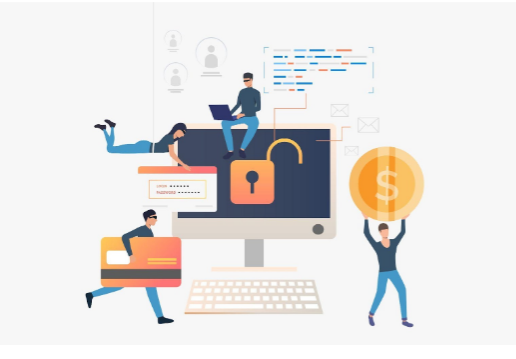The fintech wave and the open-source movement are assisting banks in going digital. These trends have obviously benefited both banks and their clients.
Workflow digitalization allows banks to reduce operating costs, focus on developing client-oriented solutions, and thus enhance client experiences. Meanwhile, clients can enjoy the speed and simplicity of online financial services such as mobile apps, digital wallets, contactless payment, 24/7 access, etc. That said, the transformation has also been attributed to many new forms of digital bank fraud.
Nowadays, most bank frauds happen online. According to the Financial Crime Report for the second quarter of 2022, online attack rates increased by 233% overall. Fighting against ever-changing online bank fraud has been more challenging than ever. For banks to remain competitive, seamless digital experiences aren't enough. They also need to implement an effective bank fraud detection and prevention strategy. Otherwise, huge losses await, including both direct and indirect costs.
What Is Digital Bank Fraud?
Digital bank fraud is an online illegal act to steal money or assets from banks and other similar financial organisations. It can be committed by either a single individual or a high-tech crime group.
What Are Some Common Types Of Digital Banking Fraud?
There are various types of online banking fraud. However, the three types mentioned below are the ones most frequently encountered.
- New Account Fraud can happen during an onboarding process to verify client identity. It is risky for banks or financial groups as this process takes place online. There is no face-to-face interaction between their staff and clients. Chances are identity thieves can use fake or stolen IDs to fool the process and open a new account. Later, they will commit financial crimes. For example, apply for credit cards or loans in a fake or stolen name.
- Account Takeover Attack is another form of identity theft. It happens when a fraudster somehow can log into a legitimate account. Then, begin taking control of it by changing its user name or password. As a result, the victim can no longer access his own account. The fraudster can transfer money to another bank account or make other fraudulent transactions.
- Fund Transfer Fraud is also known as wire transfer fraud. This type might not be the most popular digital bank fraud. Yet, it is the most destructive for banks and financial groups. In almost all cases, it's nearly impossible to recover the stolen fund. Fraudsters will set up a fake account and use various techniques to launder money. When a bank or an organisation becomes aware of suspicious activities, the money might already be gone. And the fake bank account might already be closed.
Are Digital Users 100% Safe Now?
Of course, bank users cannot be 100% secure. Fraud in the banking sector can be exploited from both sides. Imagine this situation: A client clicked on a malicious link in a fraudulent message he received. Then, his account information was stolen. The question is: Who is responsible for the bank fraud in this case?

Online campaign of Monzo to warn their clients about a phishing scam
That’s why it’s the responsibility of both banks and clients to increase the security level. Clients should raise their awareness of online security risks themselves. Meanwhile, banks and financial groups should provide ongoing education for their clients. In addition, they need to invest in advanced technologies for fraud detection and prevention.
Along with the industrialisation of digital bank fraud, the revolution of advanced technologies has spread to prevent these illegal acts. Technology-based strategies are considered the most effective ones to fight against internet bank fraud. Today, a wide range of technologies is available in the marketplace to help banks and financial groups identify fraudsters’ attempts and prevent them.
Transaction monitoring software, for instance, can detect and flag suspicious activities, then block them as well as monitor the safety of SSL/TLS certificates required to prevent data loss while issuing payments. Machine learning algorithms and robust risk scoring can identify fraudsters' attempts to enter fake information. A real-time data enrichment tool can help supplement client KYC data with additional information gathered from open-source databases, social networks, and other sources.
Final Words
Digital bank fraud is an unexpected event for both banks or financial groups and their clients. Both sides are badly suffering from this event. However, the most aggrieved party is usually the former. When it happens, banks and financial groups incur two types of costs:
- Direct costs: compensation for damage to clients, non-compliance fines, etc.
- Indirect costs: broken reputations, time spent handling the situation, customer loyalty, etc.
Obviously, the most terrible consequence for banks and financial groups is the fragile relationship with their clients. In the Great Payments Disruption report, 67% of respondents suffering fraud switched their bank as a result.
The winner in the battle for client loyalty will be the ones that effectively implement bank fraud detection and prevention strategies and provide ongoing education for their clients.












